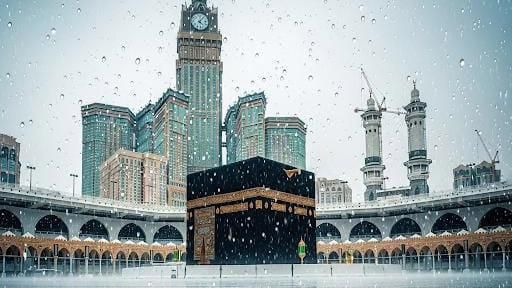In a significant and somewhat uncharacteristic turn for the desert nation, Saudi Arabia is bracing for a period of widespread and heavy rainfall, with the General Directorate of Civil Defence issuing a critical warning for severe weather conditions set to commence this Sunday and persist through Thursday. This unexpected deluge marks a notable deviation from the Kingdom's typically arid climate, prompting urgent calls for public vigilance and safety precautions.
The Civil Defence, through the Saudi Press Agency (SPA), has strongly advised residents and visitors to exercise extreme caution. The primary directive is to remain in safe, elevated areas and to strictly avoid locations prone to the accumulation of torrents and valleys, where flash floods are a significant risk. Furthermore, swimming in these potentially dangerous areas is strictly prohibited. These instructions underscore the severity of the anticipated weather, which is expected to bring thunderstorms across several regions of the Kingdom.
The western Hejaz region is specifically mentioned as an area that will experience considerable rainfall this week. Breaking down the forecast by region, the Makkah area is predicted to receive moderate to heavy rain, which could lead to torrential downpours, hail, and dust storms. Specific locations within Makkah expected to be most affected include Taif, Maysan, Adham, and Al-Ardhyat. Lighter to medium rainfall is also anticipated in other parts of Makkah, such as Makkah city itself, Al-Jumum, Al-Muwayh, Turabah, Ranyah, Al-Laith, and Al-Qunfudah. Beyond the Hejaz, the southern regions of Jazan, Najran, Aseer, and Al-Baha are also expected to experience moderate to heavy rainfall, highlighting a broad geographical impact of this weather system.
The General Directorate of Civil Defence reiterated the paramount importance of public awareness and strict compliance with safety instructions issued through official channels. Staying informed and adhering to guidelines will be crucial for ensuring public safety during these unstable weather conditions.
The Unseen "Rainforests" of Saudi Arabia: A Biological Marvel
While Saudi Arabia is predominantly known for its vast deserts, the mention of rainfall brings to light a lesser-known but incredibly rich ecological aspect of the Kingdom: its unique "rainforests" – specifically, the vibrant coral reefs of the Red Sea. Often referred to as "rainforests of the sea," these underwater ecosystems are teeming with biodiversity and play a vital role in marine life and coastal protection.
The warm, salty waters off the Arabian Peninsula, particularly along the Red Sea coast, create an ideal environment for coral growth. This region boasts an impressive diversity, with up to 260 coral reef species thriving in its shallow lagoons and deeper waters. Fringing reefs line the northwestern Saudi Arabian coastline, extending outwards from the shore. Moving south, the biodiversity increases, with a combination of patch and barrier reefs contributing to even richer ecosystems.
These coral "rainforests" are not just a visual spectacle; they are crucial for the health of the marine environment. They provide a fundamental food source for countless sea creatures and humans alike, and critically, they act as natural barriers protecting the shorelines from erosion and storm surges.
However, these delicate ecosystems face challenges, notably from increasing human demand for freshwater in the arid region. The proliferation of desalination plants, while vital for human consumption, produces brine – a salty wastewater byproduct – which, when released back into the Red Sea, can decrease dissolved oxygen levels and impact aquatic life.
The current forecast of heavy rainfall, though a terrestrial event, serves as a reminder of the complex and interconnected natural systems at play in Saudi Arabia, from its unexpected deluges to its hidden underwater wonders.







.svg)

